Sick way Putin could justify chemical and biological attacks
NATO is being urged to take immediate action as Russian President Vladimir Putin looks like he could do the unthinkable.

World
Don't miss out on the headlines from World. Followed categories will be added to My News.
The spectre of chemical warfare has flared again after the alleged poisoning of a Ukraine-Russia peace talks delegation.
NATO is now being urged to take immediate action, as one expert warns: “There is no time to lose.”
Russian President Vladimir Putin has a murderous reputation. He hasn’t hesitated to use chemical weapons against his enemies in the past. And he’s just given us cause to believe he’s ready and willing to do so again – on a much larger scale.
Several negotiators at Ukraine-Russia peace talks – including Russian billionaire oligarch Roman Abramovich – have displayed poisoning symptoms. None are reportedly in danger (though Mr Abramovich said he lost his sight for hours).
The small dosage was likely meant to intimidate, investigative group Bellingcat quotes a chemical weapons specialist as saying.
Bellingcat can confirm that three members of the delegation attending the peace talks between Ukraine and Russia on the night of 3 to 4 March 2022 experienced symptoms consistent with poisoning with chemical weapons. One of victims was Russian entrepreneur Roman Abramovich. https://t.co/DJaZ4CoL8J
— Bellingcat (@bellingcat) March 28, 2022
But Professor Michael Osterholm, director of the Centre for Infectious Disease Research and Policy at the University of Minnesota, points to the ease with which Mr Putin has used such despised and indiscriminate methods in the past. And that’s a warning for the future.
Stream the latest on the invasion of Ukraine from the world’s most trusted news sources with Flash. 25+ news channels in 1 place. New to Flash? Try 1 month free. Offer ends October 31, 2022 >
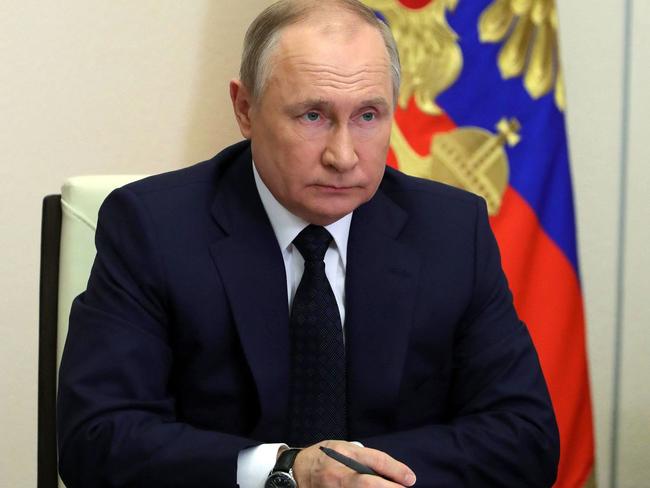
“Now, as Russian President Vladimir Putin doubles down on his stalled military adventure in Ukraine, the threat has become acute,” Prof Osterholm says. “However implausible a biological or chemical attack once seemed, the United States and its NATO allies need to game out the worst-case scenarios, take inventory of the resources they have at their collective disposal to deal with biological and chemical attacks, and swiftly bolster those resources.
“There is no time to lose.”
The risk is enormous.
There is a reason such methods have been branded weapons of mass destruction.
“An anthrax contamination site as large as a Ukrainian city would likely just sit as an abandoned sprawling no man’s land, akin to a bacterial Chernobyl,” Prof Osterholm says.
Clear and present danger
“Just a few weeks ago, the notion that Russia might use such weapons in its campaign in Ukraine would have seemed unduly alarmist. That is no longer the case,” he says.
Now they could be seen as a quick fix by a desperate Mr Putin.
“Biological and chemical weapons do what bullets and even bombs cannot; civilians can more easily find shelter from shelling and bombing than they can evade invisible gases or microbes,” Prof Osterholm says.

And the Russian leader appears to be laying the groundwork for just such an attack.
NATO officials have openly revealed intelligence that Moscow may be considering a “false flag” attack. It would involve using chemical weapons against its own troops or people to justify an overwhelming response in kind.
“If chemical weapons were used, the effects would be horrific – not just in terms of loss of life, but also because the areas impacted would become uninhabitable,” says the University of Tasmania’s James Dwyer.
“Many chemical weapons persist in the environment. In the case of some (nerve agents in particular), a single touch on the skin is enough to cause death in seconds or minutes. Decontaminating affected areas would be enormously difficult and dangerous.”
Chemical agents can also be spread by wind and rain.
And weaponised diseases can leap person-to-person around the world.
That’s why the US and NATO are warning Moscow that any such attack would likely bring the West into the war.
“It would trigger a response in-kind,” US President Joe Biden said last week. “Whether or not you’re asking whether NATO would cross, we’d make that decision at the time.”
Putin’s poisonous personality
“Putin seemingly has no compunction about using such agents against his political foes,” Prof Osterholm says.
The Soviet Union claimed to have destroyed its chemical and biological arsenal in 2017. But we know at least some of it still exists.
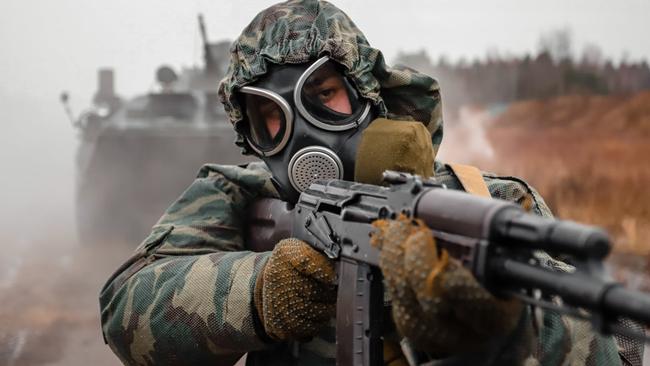
Outspoken Putin critic and former spy Alexander Litvinenko was turned into a walking radiological “dirty bomb” in 2006. He had been poisoned with radioactive polonium-210 in an attack that contaminated several London locations. Three weeks after the poisoning, he died in a London hospital.
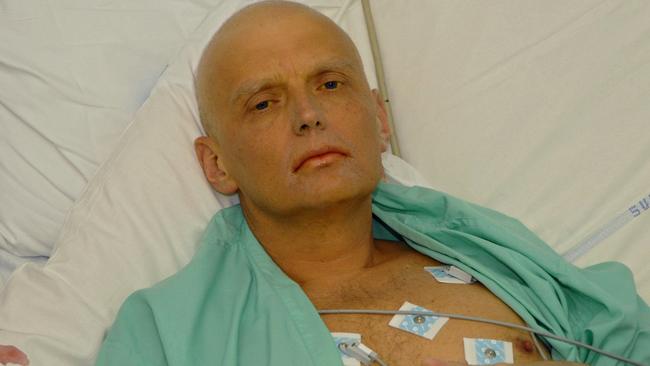
The artificial neurotoxin Novichok was used to poison former Russian spy Sergei Skripal and his daughter Yulia in the UK city of Salisbury in 2018. A police officer who attended the incident was also affected, as well as a local couple who inadvertently found the perfume bottle containing the poison. The local woman died from the poisoning.
Then in 2020, Russian opposition leader Alexei Navalny was also dosed with the same Novichok nerve agent.
And these are just the known attacks that have taken place outside of Mr Putin’s own country.
“A person close to Mr. Abramovich said it wasn’t clear who had targeted the group.†There’s is one person who has penchant for poisonings with chemical substances…but his name escapes me https://t.co/HhP9rrMum5
— Dr Alina Polyakova (@apolyakova) March 28, 2022
Then there’s the Kremlin’s guilt by association.
One of Russia’s closest allies is Syrian President Bashar al-Assad. He has used chemical weapons such as sarin against his own people during the prolonged civil war. More than 300 attacks have been recorded. The death toll is in the thousands.
The attacks followed a game-plan similar to that being played out in Ukraine.
“When chemical weapons were deployed in Syria, clearly Assad was behind it,” says US Senator and vice chairman of the Select Committee on Intelligence Marco Rubio. “But [Mr Putin] spent weeks sort of building up this notion that somehow the rebels and the opposition to Assad were the ones who were going to use chemical weapons”.
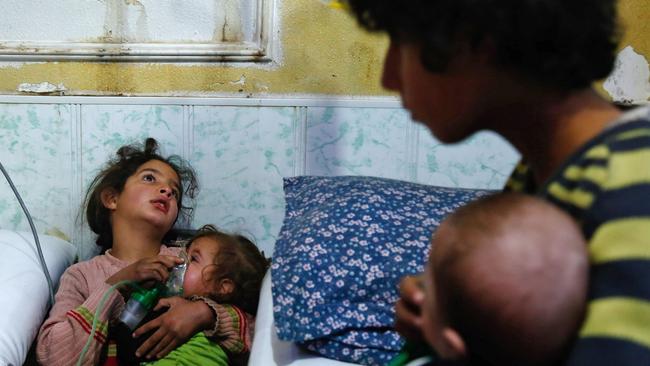
Similar propaganda is being spread by Russia’s social media operatives now.
“And so my feeling is that that’s exactly the kind of thing he would try to do here,” Mr Rubio said. “I don’t think that he would himself admit that he is using these chemical weapons. I think that he would want to blame that on Ukraine or NATO and say that it was them who did it.”
Thinking the unthinkable
Mr President Putin has already threatened nuclear war by putting his forces on “special alert”.
And his propaganda troops have been attempting to build and promote a narrative that the US was secretly using Ukraine to weaponise the coronavirus found in bats.
“Such brinkmanship makes the use of chemical and biological agents more plausible,” Prof Osterholm says.

A single anthrax drop could kill tens of thousands before an appropriate antibiotic was manufactured in bulk and distributed. And unleashing such devastation on Ukraine would be just one small step for a despot already used to using such tools.
“Attacking a civilian population with these weapons would represent a tactical change in scale but not in kind.” he says.
Anthrax. Brucellosis. Plague. Q fever. Smallpox. Weaponised versions of these and other debilitating diseases were once part of the Soviet Union’s arsenal.
Then there are chemical agents such as sarin, chlorine, phosgene and mustard gas.
Prof Osterholm is calling on NATO to mobilise stockpiles of vaccines, antibiotics, antidotes and gas masks to be ready for rapid deployment.
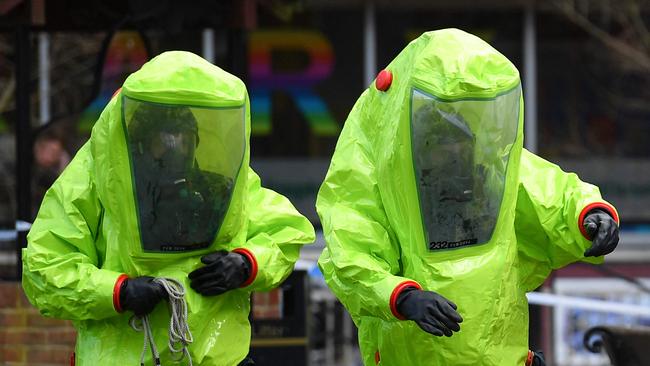
It should also clarify that any such attack would be met with retaliation
“It will take much more than indignation and economic measures to contend with the very real threat of biological and chemical warfare,” he says.
“If intelligence sources ever detected Russian efforts to vaccinate troops and citizens against smallpox or other biowarfare agents, that would instantly change the equation and could plunge the United States and its allies into an existential confrontation with Russia.”
But we’re not there yet.
“For now, we have not seen Russian soldiers equipped with the protective equipment needed to operate in a chemical-hazard environment,” Mr Dwyer says. “This suggests chemical weapons use is not imminent.”
Jamie Seidel is a freelance writer | @JamieSeidel
More Coverage
Originally published as Sick way Putin could justify chemical and biological attacks





